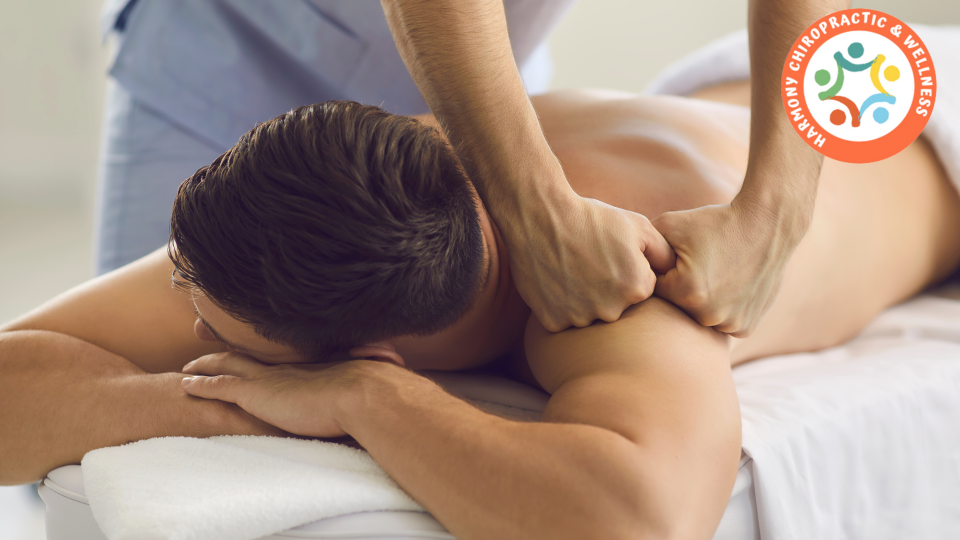
In today’s fast-paced world, it’s easy for stress, tension, and physical strain to take a toll on your body. Deep tissue massage relieves tension, pain, and restores balance, whether from posture issues, injury recovery, or stress. But what exactly is deep tissue massage, and how can it support your recovery and wellness? Let’s explore how this technique can enhance your overall well-being.
What is Deep Tissue Massage?
Deep tissue massage is a specialized form of therapeutic massage that targets the deeper layers of muscle and connective tissue. Deep tissue massage works through layers of muscle to address chronic pain, stiffness, and tension in problem areas. By using slower strokes and firmer pressure, it helps break down adhesions and release tension, promoting better flexibility and mobility.
Key Benefits of Deep Tissue Massage
- Relieves Chronic Pain and Tension: Deep tissue massage reduces chronic pain from past injuries, poor posture, or overworked muscles. By targeting deeper muscle layers, it breaks down scar tissue, reduces inflammation, and relieves persistent aches.
- Improves Posture: Poor posture is a common issue that leads to tension in the neck, shoulders, and back. Over time, this can cause discomfort and even injury. Deep tissue massage can help realign your muscles, which can lead to better posture. With regular sessions, you can experience lasting improvements in how you carry yourself.
- Reduces Stress and Anxiety: While deep tissue massage focuses on physical tension, it can also have a positive impact on your mental health. Chronic muscle tightness is often linked to stress and anxiety. By releasing tension & improving blood circulation, deep tissue massage can induce a sense of relaxation, ultimately reducing overall stress levels.
- Enhances Blood Circulation: Deep tissue massage promotes better blood flow throughout the body. The pressure applied during the massage helps dilate blood vessels, allowing oxygen and nutrients to reach your muscles more efficiently. This improved circulation can aid in faster recovery from injuries and reduce swelling or inflammation in certain areas.
- Helps with Rehabilitation from Injury: Whether from a sports injury, pulled muscle, or whiplash, deep tissue massage supports recovery by targeting muscles and connective tissues, reducing swelling, and minimizing scar tissue. It’s especially effective for athletes who need to return to their physical activity as soon as possible, promoting both recovery and wellness.
- Promotes Flexibility and Range of Motion: If you’ve ever had a stiff muscle that just won’t seem to loosen up, deep tissue massage may be the solution. The deeper pressure applied during this therapy helps break up adhesions (muscle knots) that limit your flexibility. As a result, your range of motion can improve, aiding in your recovery and wellness, making it easier to move freely and perform activities without discomfort.
- Relieves Headaches: Tension headaches are often caused by tightness in the neck, shoulders, and upper back. Deep tissue massage can help release this tightness, alleviating pressure in the head and reducing the frequency and intensity of headaches. Regular sessions can offer long-term relief from chronic headache pain.
Who Can Benefit from Deep Tissue Massage?

Deep tissue massage is beneficial for anyone experiencing muscle pain, tension, or stiffness. It’s especially helpful for:
- Individuals dealing with chronic pain or muscle tightness
- Those recovering from injuries or surgery
- Athletes or individuals engaged in regular physical activity
- People experiencing stress, anxiety, or tension-related headaches
- Anyone looking to improve posture or mobility
- Anyone looking for general recovery and wellness
Before booking a session, it’s always a good idea to check with a healthcare provider to ensure deep tissue massage is appropriate, especially if you have certain medical conditions.
What to Expect During a Deep Tissue Massage
During a deep tissue massage session, your therapist will ask you about any areas of tension or pain you would like to focus on. Expect firm pressure applied to the muscles and deep strokes to target those problem areas. It’s common to experience some discomfort during the massage, especially if you have tight muscles or chronic pain, but you should never feel unbearable pain. Communication with your therapist is key — let them know if you’re feeling too much pressure.
After the massage, it’s normal to experience some soreness in the treated areas, similar to the feeling after a tough workout. Drinking plenty of water and taking it easy for the rest of the day can help alleviate this soreness.
Conclusion
Deep tissue massage is a powerful tool for improving physical and mental well-being. By addressing chronic pain, improving flexibility, and reducing stress, it can play a crucial role in your overall recovery and wellness. Whether you’re seeking relief from a specific injury or just want to improve your posture and mobility, deep tissue massage is an excellent choice for anyone looking to feel their best.
If you’re considering deep tissue massage, be sure to consult with a licensed massage therapist to determine the best approach for your individual needs. Your body will thank you for it!

